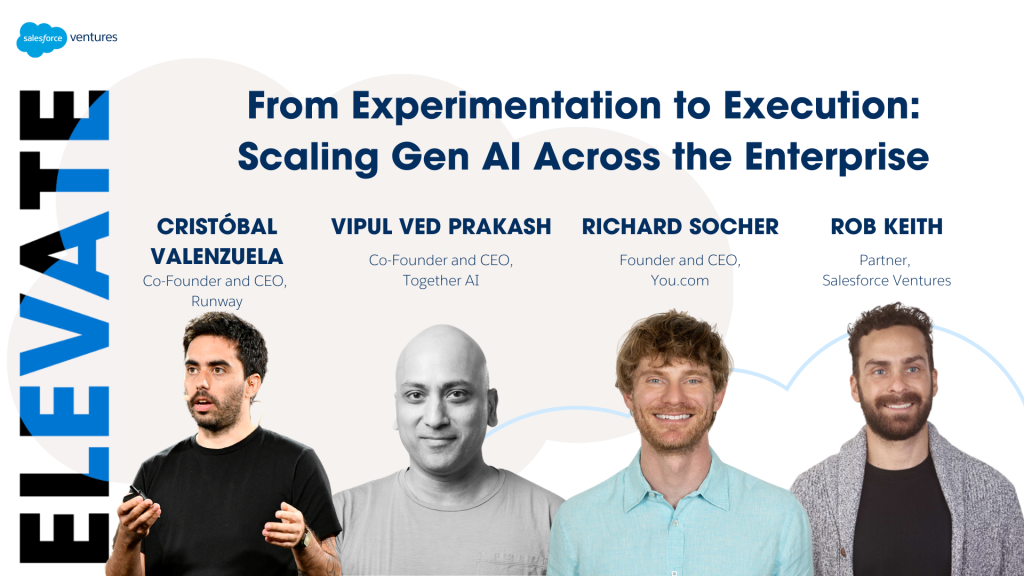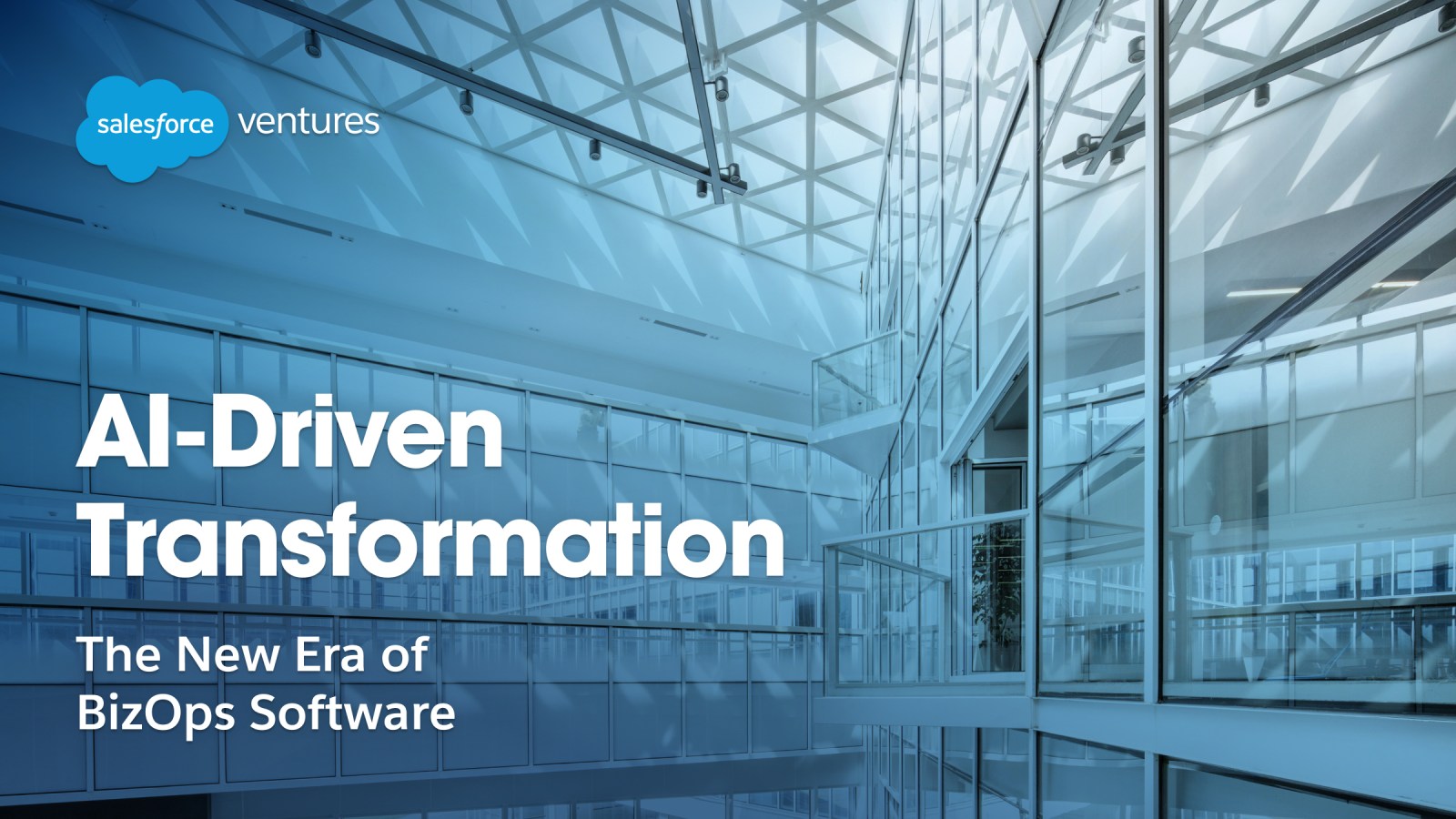We recently published a guide for startups thinking about implementing generative AI into their products. In part two of this series, we explore a slightly different question: how can companies leverage AI to improve their own operations?
Generative AI has the ability to fundamentally change how we work and how companies operate. We’re already seeing an influx of augmentative chatbots, AI assistants, and copilots that drive greater productivity across coding, customer service, and sales. The not-so-distant future will likely see even broader task automation and the further re-imagining of work.
We spoke to a number of our portfolio companies about how they’re thinking about leveraging AI in their businesses and how they anticipate AI transforming the nature of business operations in the long term. Here are a few of our takeaways…
Think in Terms of Tasks, Not Jobs
When considering how to leverage AI internally, CEOs must apply a new framework to think about how work gets done. Whereas one might typically think of their organization as a collection of employees with skills, successfully applying AI requires executives to think in terms of the series of tasks that must be completed for the business to execute its mission.
By analyzing the tasks that can be automated, leadership will be better able to identify high-impact use cases for generative AI, as well as how to most effectively implement the technology alongside employees. Automating some aspects of a role also allows employees to spend more time on higher value activities.
“CEOs should think about the organization from a first principles perspective and ask how they would design their org if they were restarting today with generative AI. At Reejig, we prioritized tasks for automation based on what was costing us the most money, what was causing the business the most pain, and what had the highest potential to be successfully automated.” – Siobahn Savage, CEO, Reejig
Re-Evaluate Resource Allocation
The emergence of AI workers requires founders to reimagine their organizational structure in terms of both employees and augmentative / autonomous software solutions. Scaling an organization will require thoughtfulness around where employees can drive the most value and where AI solutions and automation can augment work to drive greater productivity. We see an opportunity for founders to drive greater capital efficiency and for employees to find greater fulfillment once they’re able to automate away repetitive and mundane tasks related to their job.
The quality of AI solutions, the mode of delivery (from copilot to AI worker), the breadth of tasks they can address, and the level of comfort with which companies deploy these tools will continue to evolve. Companies must be flexible and responsive in order to best leverage these solutions to optimize their organizations.
“In a role like customer service, 70-80% of the tasks are automatable. You should start there with an AI agent but also pay attention to where the AI falls short. This is how we think about resource allocation at Reejig.” – Siobahn Savage, CEO, Reejig
Reduce Information Silos
For AI to drive real efficiency within an organization, it needs data that offers context across the entire business. For instance, an AI tasked with sales prospecting must be trained on historical sales and marketing data to be an effective agent. As such, AI will be a catalyst for the reduction of data silos across organizations, and it should be an organizational priority to ensure that information can flow more freely between teams. In practice, this means that companies will need to address current barriers around trust and security when leveraging their data with AI technology. The most effective companies will embed a data and AI-centric mindset across their teams to ensure the technology is being best leveraged to drive efficiencies.
“We want to add a data scientist to all of our teams to focus on leveraging data and finding ways for the AI to drive new efficiencies.” – Josef Starýchfojtů, Chief Product & Technology Officer, Mews
Be Prepared to Move Fast…
The current generation of generative AI technologies is suitable for tasks across a variety of roles and industries. For instance, summarization tools can drive better insights from customer calls, code-gen tools can significantly improve developer productivity, and AI-powered search tools can improve customer support. CEOs must move fast to take advantage of these value-adds to keep up with their competitors while simultaneously keeping an eye on the rapidly changing landscape. With the current pace of innovation, something orders of magnitude better than the current industry standard might come along in just six months.
“We are looking at third-party vendors but we know the technology is changing very fast. So we are not signing contracts for more than a year and we are prepared to switch to the latest AI technology when the next iteration comes along.” – Tomas Dostal Freire, Director of Business Transformation, Miro
And Slow…
While there are many obvious use cases for generative AI right now, there are also many areas where AI is not yet able to drive value within an organization. Trying to implement AI where there isn’t a clear value-add is not a good use of an organization’s time or resources. Instead, organizations should exercise patience, keep an eye out for new innovations, and only leverage new AI solutions when they identify another obvious use case. Additionally, the shift toward more usage-based pricing for AI products may mean companies need to be selective about the highest ROI use cases for AI products given related costs (i.e., computing, storage, etc.).
“We look at AI less as a fix-all than as an innovation imperative. We saw AI could provide us value across marketing and GTM but was less mature for finance, legal, and accounting right now. Founders should look where AI has the fastest road to value, but don’t treat it as the hammer for every nail.” – Tomas Dostal Freire, Director of Business Transformation, Miro
Shift from Point Solutions to AI Workers
While there are many point solutions currently in the market, the future belongs to organizations that can develop AI workers that can perform a variety of complex tasks. As companies start to implement AI solutions internally, they should be preparing their tech stack and organizations for this future.
“We value vendors that can expand from initial use cases beyond their niche, building towards agentic AI. We’re looking for collective intelligence with fewer tools.” – Tomas Dostal Freire, Director of Business Transformation, Miro
Our AI Investment Approach
At Salesforce Ventures, we’re excited about the potential of AI applications to drive efficiency and productivity gains across organizations. We encourage our portfolio companies to move fast in implementing responsible AI and identify easy wins related to AI automation in order to drive efficiency and maintain a competitive edge.
We’re also really excited to meet with founders who are building the tools and platforms that will enable organizations to achieve these gains. Our evolving AI investment framework reflects how we think about assessing these opportunities:
- How much value is the tool providing? Is this a use case that is worth leveraging generative AI for? Is it providing enough value, and are customers willing to pay in the long-term (i.e., no AI-tourism)? The best platforms today deliver 5-10x+ value in terms of efficiencies and/or new revenue generation opportunities for customers.
- What’s the moat? Some AI applications may have technical moats, having fine-tuned third-party models or even built proprietary models in-house. However, we’re also seeing the emergence of many AI applications that may not have significant technical advantages (i.e. “wrappers” on foundation models). In which case, what is the “right to win” (e.g., UX, proprietary dataset, distribution, etc.)?
- Does the founder have an edge in understanding a customer’s needs and behavior today and how it might evolve in the future? This question is particularly relevant with AI-enabled vertical SaaS applications. We see an outsize opportunity for AI to drive value creation in industries that have historically lagged behind in technological transformation. We note that these industries often require a targeted GTM and deep understanding of the problem statement.
- Why is this use case better resolved by a newcomer vs. an established incumbent? What is the new entrant’s edge against companies that are themselves investing in AI, and that also have the advantages of pre-existing distribution and proprietary data sets? Our perspective on this factor varies somewhat depending on the behavior of the incumbents in the segment, as well as on the potential we see for new, AI-first solutions to meet an unaddressed customer need that could then provide a wedge to build out a competitive platform.
- How is the company thinking about evolving modes of delivery (e.g., from standalone chatbot to more opinionated ‘suggestions’ in workflows to truly autonomous agents)? Is mode of delivery a competitive differentiator? What customers are happy using today may not ultimately be the best mode of delivery in the future. Do we feel confident that this company is structured to keep up with rapidly evolving methods of delivery as the technology and user behavior evolves?
- Ultimately, what would it take for an AI tool to become an industry-standard platform? Salesforce Ventures admires products that are deeply embedded in core workflows and that are being used on a daily basis. We’re interested in founders who have identified opportunities to deliver significant ROI to core business needs, and that have the vision to build out broader platforms.
If you’re a founder building at the intersection of AI and BizOps, we’d love to chat! To get in touch with Laura Rowson, email her at laura@salesforceventures.com. To get in touch with Jess Bartos, email her at jess@salesforceventures.com.







